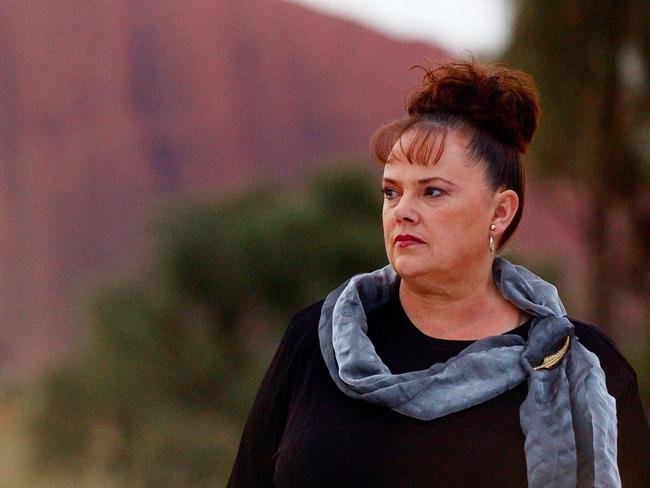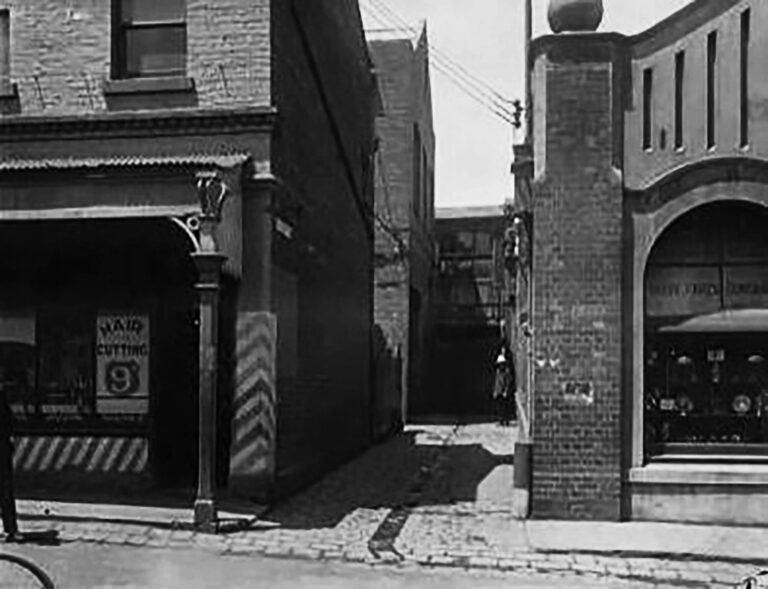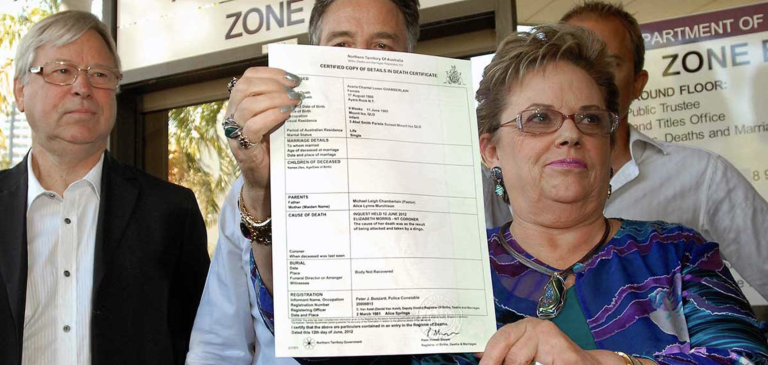The Shameful Tale of What Happened to Lindy Chamberlain
Probably the most infamous case in Australia, certainly the case that has received the most publicity, which revealed the fragility of the criminal justice system, is the Chamberlain case. On 17 August 1980 Azaria Chamberlain went missing from a camp site at Ayres Rock (Uluru) in the Northern Territory. Azaria Chamberlain was nine-weeks old when she was taken from the family tent by a dingo.[1]
First Inquest
As is common in cases where someone dies in unusual or suspicious circumstances a coronial inquest was held to try and determine the manner and cause of death. The inquest was to turn out to be just the first into her death. It was held from 15 December 1980 to 20 February 1981 in Alice Springs. The coroner was Stipendiary Magistrate, Denis Barritt. He found that a dingo snatched and killed Azaria Chamberlain. The parents, Michael and Lindy Chamberlain, were not implicated in any way with the disappearance of their child.
His findings were to ultimately be shown to be correct. But it required three further inquests, an appeal to the Federal Court, an appeal to the High Court and a Royal Commission before the legal system again got it right. The Chamberlains were to be harshly punished for a crime they did not commit.
Second Inquest
On 18 November 1981 the Supreme Court of the Northern Territory overturned the findings of Coroner Barritt and ordered a second inquest.
The second inquest was presided over by Coroner Gerry Galvin. It commenced on 14 December 1981 and concluded on 2 February 1982. He stated:
‘The evidence is, to a large degree, circumstantial. In my view, having considered all the evidence, that a jury properly instructed could reach a verdict.’[2]
Murder Trial
Lindy Chamberlain was brought to trial on a charge of murder. Michael Chamberlain was charged as an accessory to murder. The trial commenced on 13 February 1982 in Darwin before Justice Muirhead and a jury.
The trial was accompanied by extensive media coverage, most of which was adverse to the Chamberlains.[3] One of the more absurd aspects to the trial was the claim that dingoes would not attack a human. The prosecutor was Ian Barker QC was reported to have said in his opening address to the jury that evidence supporting the proposition that a dingo took Azaria Chamberlain, shown by drag marks 100 metres over a sand hill, was a ‘red herring’.[4] The focus of the trial was on ‘blood stains’ supposedly found in the family car.
On 29 October 1982 the jury returned a unanimous verdict of guilty for both parents. Lindy Chamberlain was convicted of murdering her baby Azaria, based on the proposition that she cut her throat in the front seat of the family car.
On 19 October 1982, Lindy Chamberlain was sentenced to life imprisonment for murder. On 30 October 1982 Michael Chamberlain was sentenced to 18 months’ gaol, this was suspended on the basis that their children Aidan and Reagan needed to have a parent to look after them.
Federal Court Appeal
On 8 November 1982 the Chamberlains lodge an appeal in the Federal Court. On 19 November 1982 the Full Bench of the Federal Court granted Lindy Chamberlain bail, pending the outcome of her appeal. On 29 April 1983 Justices Bowen CJ, Forster and Jenkinson JJ, reject the appeal,[5] and Everingham the Northern Territory Attorney-General announced that Lindy Chamberlain would return to jail.
High Court Appeal
On 22 February 1984 a High Court Appeal, in a split decision (3:2), rejected an appeal by the Chamberlains.[6] Despite the fact that there was substantial evidence that the ‘expert’ prosecution evidence that there was foetal blood in the family car was simply wrong and that proof of its existence was need to obtain a conviction, the majority of the High Court judges did not find the verdict unsafe and unsatisfactory, now called unreasonable. The reason why the case was a very clear miscarriage of justice is best stated by Justice Murphy, one of the two dissenting judges. In summary, the significant problems with the Crown case were: blood test samples were destroyed and therefore could not be checked; foetal blood was not found in the car; a claimed small adult hand on the baby’s jump suit was not present; the jury was told they could convict on the evidence of one Crown expert when that evidence was contradicted by others who were more qualified; and the Crown had not excluded reasonable evidence brought by the defence which was consistent with the innocence of the Chamberlains.
Justice Murphy stated, amongst other things:
‘19. The Crown’s “Scientific” Evidence. Failure to preserve the vital evidence of the blood samples from the car prejudiced the defence’s right to have them cross-checked. In the United States it has been held that the “government is flirting with the danger of reversal any time evidence is lost or inadvertently destroyed. When evidence is seized, the government should take every reasonable precaution to preserve it” (United States v. Heiden [1974] USCA9 575; (1974) 508 F (2d) 898, at p 903 ). Federal investigatory agencies have been required to “promulgate and rigorously enforce rules designed to preserve all discoverable evidence” (United States v. Bryant [1971] USCADC 273; (1971) 448 F (2d) 1182, at p 1183 ). Breach of the rules will normally result in a violation of due process and suppression of the witnesses’ testimony or setting aside of the verdict (People v. Hitch (1974) 117 Cal Rptr 9, at p 18 ; Bryant (1971) 448 F (2d), at p 1184 ). The burden of proof is on the government to prove compliance (United States v. Bryant [1971] USCADC 48; (1971) 439 F (2d) 642, at p 652 ; see also “The Right to Independent Testing: A New Hitch in the Preservation of Evidence Doctrine”, Columbia Law Review, vol. 75 (1975), p. 1355; “Criminal Procedure: Government has Duty to Implement Effective Guidelines to Preserve Discoverable Evidence”, (1971) Duke Law Journal p. 644). In 1974 the National Forensic Institute Committee of Enquiry recommended the establishment of a national forensic institute to overcome such problems (National Forensic Institute Report of the Committee of Enquiry (1974) Parliamentary Paper No. 58). In 1983 the National Pathology Accreditation Advisory Council in a paper entitled Retention of Laboratory Records and Diagnostic Material recommended certain minimum standards in relation to the retention of diagnostic material. These did not relate to the specific evidential needs of the legal system although the Council stated: “Much longer retention times may be desired and maintained by individual laboratories and practitioners to meet their particular requirements.” (at p574)
‘20. Destruction of such materials reduces the value of any evidence based on them, because of the inability to test the material and cross-check the results, to such an extent as to render it nonscientific and therefore non-expert. “. . . (A) scientific observation is not taken at face value until several scientists have repeated the observation independently and have reported the same thing. That is also a major reason why one-time, unrepeatable events normally cannot be science” (P.B. Weisz, Elements of Biology (1961) p. 4). (at p575)
‘21. I agree for the reasons stated by the Chief Justice and Mason J. that a finding could not safely be made that the blood in the car was foetal. (at p575)
‘22. Other Scientific Evidence. Professor James Cameron claimed that he was able to discern the outline of a small adult hand from the pattern of blood-stains on the baby’s jumpsuit. If accepted this was powerful support for the Crown case. Dr. Jones and Dr. Scott, who were the first such experts to view the jumpsuit did not see this print. Dr. Plueckhahn, despite use of a high contrast ultraviolet flourescent photograph, was also unable to discern such a print. This Court viewed the jumpsuit and the photographs. The jury should have been directed that this evidence was not “scientific” but highly imaginative and directed to disregard it. (at p575)
‘23. Professor Cameron also claimed that the blood on the jumpsuit was consistent only with a cut wound to the throat. Later he qualified this absolute view but still maintained that a cut throat would have been the “principal injury”. Dr. Plueckhahn expressly disagreed and said the bleeding could have come from head injuries consistent with a dingo grasping the baby’s skull in its jaws. (at p575)
‘24. Professor Cameron was cross-examined on a recent case in England described as “the Confait Case” where his evidence, devastating against the defendants and resulting in their conviction, was found to be entirely mistaken. He agreed in cross-examination that he had then given evidence without “correct knowledge of all the attendant circumstances”. The accused in that case were, after judicial enquiry, awarded 60,000 pounds in compensation for their wrongful imprisonment. This illustrates that it is dangerous to convict on “expert” evidence which is inconsistent with otherwise credible evidence of what witnesses saw or heard. (at p575)
‘25. Judge’s Directions to the Jury. Muirhead A.C.J.’s summing up to the jury was undoubtedly on the whole favourable to the accused. However the above view that a majority of this Court has formed concerning the blood in the car raises a further central issue concerning the summing up. Muirhead A.C.J. told the jury that it was entirely for them to decide which of the expert opinions they should accept, on the presence of the foetal blood. He directed them that they could act “completely on her (Mrs. Kuhl’s) evidence, if the other evidence leaves you to have no reasonable doubt as to its validity”. In the circumstances of this case that was a misdirection. Eminent experts had raised serious and not satisfactorily answered objections to Mrs. Kuhl’s evidence on foetal blood. The judge’s directions invited the jury to undertake an unsafe and dangerous assessment. (at p576)
‘26. The foetal blood was the hinge of the Crown’s theory that the baby was murdered in the family car. (at p576)
‘27. In these circumstances it is not good enough to take the view that this evidence of foetal blood can be set aside, and to look at the rest of the evidence to see if the verdict can be sustained. If that is done the reasoning runs like this. Because of the verdict the jury must have disbelieved not only Mrs. Chamberlain and Mr. Chamberlain but also Mrs. Lowe and the others at the barbecue site, and rejected other evidence which might have raised a reasonable doubt. They therefore rejected the dog or dingo hypothesis leaving murder as the only possibility; therefore the verdict can stand. The error in this approach is that the jury’s view of the exculpatory evidence may well have been taken in the light of their acceptance of the scientific evidence as reliable, an acceptance contributed to by the trial judge’s summing up. Likewise with other adverse conclusions, and the finding of guilt itself. If in accordance with the directions, the jury accepted the evidence that the blood was foetal, it was irresistible that they should then disbelieve Mrs. Chamberlain and the other evidence pointing to her innocence. The problem is analogous to that where a conviction is challenged because powerful inadmissible evidence was admitted. It becomes impossible to know whether the inadmissible evidence was relied on and the extent to which it coloured the jury’s views on other issues. Once it is accepted that it was unsafe to conclude that there was foetal blood in the car then the conviction of Mrs. Chamberlain was unsafe. (at p576)
‘28. The Crown contends that the jury were entitled to take a view of the whole of the evidence which would justify a conviction, even if the blood were not accepted as foetal. As I understand it, the Chief Justice and Mason J. accept that contention and as a result would disallow the appeal. In my opinion that is not the correct test. (at p576)
‘29. The real question is whether the jury might have arrived at its verdict against the accused because they accepted the evidence that the blood was foetal, and whether had they been directed otherwise the result may well have been different. Having arrived at the conclusion that it was unsafe for the jury to accept the evidence that the blood was foetal the verdict should be set aside unless the jury would inevitably have reached the same verdict if they had been directed that the evidence that there was foetal blood was unsafe. As there is no proper basis for concluding that the jury would have reached the same verdict, the conviction should be set aside. Not only for that reason, but because I am of the firm view that the rational hypothesis advanced by the defence was not excluded beyond reasonable doubt and that the presumption of innocence was not displaced, Mrs. Chamberlain is entitled to a judgment of acquittal. (at p577)’
Subsequent Events and New Evidence
In October 1985 the Northern Territory government ordered Solicitor-General, Brian Martin, to reopen investigations. He reported that there were no grounds for an inquiry.
At 8pm on Sunday 26 January 1986, a person was seen climbing Uluru, in an area where tourists were not allowed. On Sunday 2 February 1986, police located the body of David Brett a 31year old British tourist, on a remote side of Ayer’s Rock. Brett appeared to have fallen from the Rock.
During the search for Brett’s police located a baby’s matinee jacket. On 5 February 1986 Lindy Chamberlain identified the jacket as belonging to Azaria.
On 7 February 1986 Lindy Chamberlain was released from prison on compassionate grounds, and in April 1986 a Royal Commission was established.
Royal Commission
The Royal Commission on 2 June 1987 delivered findings that the trial verdicts were unsafe and unsound.[7]
The Crown case was inherently flawed in terms of the sequencing of events. Royal Commissioner, Trevor Morling pointed out the apparent absurdity of the Crown position, stating amongst other things:
‘It was the Crown case that Azaria was killed in the car. It seems absurd to suggest that Mrs Chamberlain carried Azaria’s bleeding body from the car back to the tent when she would have been under Aidan’s observation. The presence of Azaria’s blood in the tent, unless it be shown to have been transferred there from Mrs Chamberlain’s personal clothing, is inconsistent with the Crown case… It has not been shown by the Crown that the blood in the tent was transferred there by the clothing or person of Mrs Chamberlain. On the contrary, the evidence points to this being an unlikely occurrence.’[8]
On 15 September 1988, the Northern Territory Criminal Court of Criminal Appeal quashed the convictions of the Chamberlains. Compensation for wrongful imprisonment was paid. The third inquest into the death of Azaria Chamberlain commenced on 24 February 2012 and the Chamberlains were vindicated.
Pardon
On 2 June 1987 the Northern Territory Administrator pardoned the Chamberlains.
Court of Criminal Appeal
On 15 September 1988 the Northern Territory Court of Criminal Appeal quashed the convictions.[9]
Third Inquest
On 13 December 1995 Coroner John Lowndes found, amongst other things:
‘As to the cause of her death and the manner in which she died evidence adduced does not allow me to say. I therefore return an open finding and record the cause and manner of death as unknown.’
Fourth Inquest
On 12 June 2012 Coroner Elizabeth Morris cited with approval the findings in regard to dingoes made by the Royal Commission. She stated:
‘17) The evidence before the Commission in relation to dingoes, led the Commissioner to conclude: “Before August 1980 dingoes in the Ayers Rock area frequented the camping area. At that time there were many dingoes in the area, some 18-25 of which were known to visit the camping area. A number of attacks were made by dingoes on children in the months preceding Azaria’s disappearance. In none of these did any child suffer serious injury. About twenty minutes before Azaria disappeared Mr Haby saw and photographed a dingo which walked towards the Chamberlains’ tent. A few minutes before the alarm was raised the West’s heard a dog growl. On the night of 17 August dog tracks were observed on the southern side of and very close to the Chamberlains’ tent. The same night Mr Roff and Mr Minyintiri, both experienced trackers and familiar with dingo behaviour, saw tracks of a dog carrying a load which they believed to be Azaria. It was within the bounds of reasonable possibility that a dingo might have attacked a baby and carried it away for consumption as food. A dingo would have been capable of carrying Azaria’s body to the place where the clothing was found. If a dingo had taken Azaria it is likely that, on occasions, it would have put the load down and dragged it. 2 Re Conviction of Chamberlain (1988) 93 FLR 239 at 242 3 S34, Coroner’s Act NT (1993) 6 Hairs, which were either dog or dingo hairs, were found in the tent and on Azaria’s jumpsuit. The Chamberlains had not owned a dog for some years prior to August 1980. The quantity and distribution of the sand found on Azaria’s clothing might have been the result of it being dragged through sand. The sand would have come from many places in the Ayers Rock region. The sand and plant fragments on the clothing are consistent with Azaria’s body being carried and dragged by a dingo from the tent to the place where it was found. It is unlikely that, if the clothing had been taken from the Chamberlains’ car, buried, disinterred, and later placed where it was found it would have collected the quantity and variety of plant material found upon it. It would have been very difficult for a dingo to have removed Azaria from her clothing without causing more damage than was observed on it. However, it would have been possible for it to have done so. Mr Roff, the chief ranger at Ayers Rock and a man of great experience, thought that the arrangement of the clothing when discovered was consistent with dingo activity. Other dingo experts disagreed. I think it is likely that a dingo would have left the clothing more scattered, but it might not have done so. The blood found in the tent was at least as consistent with dingo involvement in Azaria’s disappearance as it was with her murder in the car. The pattern of blood staining on the clothing does not establish that the child’s throat was cut with a blade. The absence of saliva on Azaria’s jumpsuit which was conclusively proved at the trial is made more explicable by the finding of the matinee jacket which would have partially covered it. The fact that no debris from the baby’s body was found on the jumpsuit is also made more explicable by the finding of the jacket. There is great conflict of expert opinion was to whether the damage to the clothing could have been caused by a dingo. It has not been shown beyond reasonable doubt that it could not have been. There were marks on plastic fragments of the nappy similar to marks made by a dingo on another nappy used for testing purposes. However, there was no blood on the nappy. There was a dingo’s den about thirty metres from the place where the clothing was found. There is no evidence that the existence of the 7 den was known to the Chamberlains, or for that matter, to anybody else and in fact it was unknown to the chief ranger and his deputy.”
The Coroner found:
‘i) The name of the deceased was Azaria Chantel Loren Chamberlain, born in Mount Isa, Queensland on 11 June 1980.
‘ii) Azaria Chamberlain died at Uluru, then known as Ayers Rock, on 17 August 1980.
‘iii) The cause of her death was as the result of being attacked and taken by a dingo.’
It took over 30 years for the legal system to behave in a responsible and reasonable way.
Conclusion
In most criminal cases, a jury can distinguish between the reasonable theory of a case and the improbable. However, where the improbable becomes reasonable through corroborative evidence, the prosecution can sometimes prove its case beyond reasonable doubt. In the Chamberlain case, apart from a zealous approach adopted by the police and the prosecution, false and misleading evidence was introduced by expert witnesses. The evidence of Joy Kuhl, Forensic Scientist, for example, was essential to ensuring the convictions of the Chamberlains. She identified blood where it did not exist. In particular, Kuhl identified blood under the dashboard area of the Chamberlain’s vehicle, which was in fact a sound deadening spray. Commissioner Morling noted a series of problems with Kuhl’s record keeping, including 12 occasions when results of tests had been changed or crossed out. He found in respect of her finding of blood under the dashboard that: ‘The fact that she could come to such a conclusion about something, which was, very probably, sound-deadener, casts doubt upon the efficacy of her testing generally and upon the accuracy of her other results’.
The Chamberlain case had available to it the appellate process, full disclosure requirements and an open court and still a miscarriage of justice occurred that was not fully rectified for many years.
The brief outline of this case provided here does not do justice to the efforts made by those who had to counter the evidence given by Joy Kuhl and others. Even where disclosure was required, it was necessary to go behind what the prosecution had provided to engage in independent investigations to disprove Kuhl’s findings. For example, Professor Barry Boettcher, who gave evidence at the trial and was attacked by the prosecution for being an academic rather than a practicing forensic pathologist, went to the Behringwerk company in Germany that produced the anti-serum used in the testing for blood and got confirmation that he had used the same anti-serum as Kuhl. This confirmed that her testing was flawed. Professor Boettcher also in May 1986 tested dust from a variety of places in Mt Isa, Queensland and found that they all gave positive readings for blood. This was further confirmation that the blood tests which were central to the prosecution case could not be relied upon.
[1] Scientific name: canis familiaris (breed Dingo). ‘The Dingo is Australia’s breed of wild dog. It is an ancient breed of domestic dog that was introduced into Australia, probably by Asian seafarers, about 4,000 year ago.’, Sue Burrel and Dr Mark Eldridge, ‘Dingo’, The Australian Museum, http//www.australian.museum/learn/animals/mammals/dingo/
[2] Galvin’s findings can be found in the Inquest report of John Lowndes, Coroner for the Northern Territory, 13 December 1995, http//justice.nt.gov.au: Azaria Chamberlian.
[3] See The Lindy Tapes: the mystery behind the famous quote: “A dingo’s got my baby” | 7NEWS Spotlight – YouTube.
[4] First published in The Age on September 14, 1982.
[5] Chamberlain v The Queen [1983] FCA 78, (1983) 72 FLR 1; (1983) 46 ALR 493.
[6] Chamberlain v R (No 2) (“Chamberlain case”) [1984] HCA 7; (1984) 153 CLR 521.
[7] Royal Commission of Inquiry into Chamberlain Convictions, Report, Commonwealth Parliamentary Papers (1987), volume 15, paper 192.
[8] Ibid 180.
[9] Reference under section 433A(1) of the Criminal Code (NT)Court of Criminal Appeal 1988.
See also Michael Chamberlain, Heart of Stone: Justice for Azaria (New Holland, 2012).




